Nina Notman sniffs out chemistry’s role in uncovering, documenting and recreating the scents of the past
As a child in the 1980s, I visited the Jorvik Viking Centre in York and I can still vividly recall the stench in the museum. These smells were intentional. Visitors there were – and still are – treated to recreations of various Viking village smells including a fish market and a smithy. But what was it about this childhood day trip that made it stick in my mind so well? ‘Studies have shown that smells are lodged in our long-term memory for a very, very long time,’ explains Matija Strlič, professor of heritage science at University College London, UK, and professor of analytical chemistry at University of Ljubljana in Slovenia.
As an early proponent of using historic smells to enhance the visitor experience, the Jorvik Viking Centre set an example for other museums to follow. ‘Museums have started to use olfactory information in order to engage audiences more than is possible with just visual information, and also to help audiences to retain that knowledge for longer,’ Strlič says.

Using smell to improve the visitor experience isn’t as new an idea as you might think. Symbolist and surrealist artists ‘were the first people to diffuse smells in galleries and museums in a meaningful way rather that just to mask other [unwanted] smells’, explains Caro Verbeek, assistant professor of sensory history at Vrije University Amsterdam in the Netherlands and curator of the work of the Dutch artist Piet Mondrian at Kunstmuseum in the Hague. ‘At the 1938 International Surrealist Exhibition at the Galérie Beaux-Arts, the poet Benjamin Péret defused the smell of coffee by heating Brazilian coffee beans on an electrical stove. That smell permeated the entire space,’ says Verbeek.
Odorant molecules are volatile by nature, meaning most of them are long gone
From the 1950s onwards, curators shunned the idea of adding odours to museums and galleries. There was a prevailing notion at that time that these spaces should be sterile and silent in order not to distract from the visual impact of the art or museum objects. In recent years, museums and galleries have begun to re-recognise the benefits of multisensory experiences. Sound effects are now commonplace, and chances to taste historic recipes, feel heritage objects and smell the smells of the past are also on the increase.
A particular challenge with developing scent recreations is that we don’t know that much about how the past actually smelled. Odorant molecules are volatile by nature, meaning most of them are long gone by the time historians or archaeologists go looking for them. Most historic scent recreations, such as those at the Jorvik Viking Centre, are therefore artistic interpretations of how that environment or object used to smell.
Curators are increasingly working with multidisciplinary teams, including historians, archaeologists, perfumers and chemists, to develop historically accurate recreations. In addition to improving museum and gallery visitor experiences, their research is also helping to better understand ancient trade routes, uncover ancient perfumery techniques, and also preserving valuable historic smells that are still around today for future generations.
Finding clues
When studying past scents, historic texts play a key role. Historians seek mentions of smell-producing objects such as fires or cigarettes, descriptions of awful stenches or pleasant aromas, and recipes for foods, incense and perfume.
Finding textual evidence can be challenging, and researchers that are part of a project called Odeuropa, funded by the EU’s Horizon 2020 programme, are currently developing AI tools to mine digitised historic texts for information related to smell. ‘The texts are in seven languages, [and range] from books, to historic letters, to cook books, to medicine manuals,’ says Cecilia Bembibre, a lecturer in sustainable heritage at University College London.
The team is also developing tools to mine digitised images, including paintings, engravings and illustrations, for olfactory references. AI is ‘identifying olfactory objects in images; this includes objects which smell and gestures related to olfaction, for example, people pinching their noses,’ says Bembibre.
The texts and images being mined date from the 1600s to the 1920s. And as of December 2022, 218,903 text extracts and 4690 images had been added to the project’s database, called the Odeuropa Smell Explorer.
Trade secrets
It is rare to find recipes in texts, and it is even rarer to find recipes that are easy to understand and replicate. The ingredients, for example, usually have old names and it can be difficult to know what modern plant species the recipe is calling for. ‘In a lot of the ancient Egyptian and cuneiform texts, when it states they used a specific oil or plant, it’s really hard to translate this properly into botanical terms,’ says Barbara Huber, a chemical archaeologist at the Max Planck Institute for the Science of Human History in Jena, Germany.
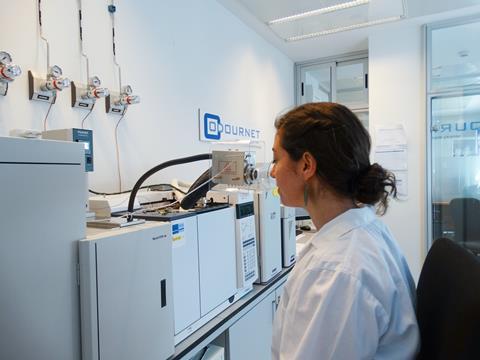
Ancient organic residue analysis can help fill in some of the knowledge gaps. ‘[It] can also help to identify smell from prehistoric time periods before the invention of script,’ says Huber. Using state-of-the-art gas chromatography–mass spectrometry (GC–MS) and liquid chromatography–mass spectrometry (LC–MS) techniques, she is able to identify ingredients in residues such as food crusts in cooking pots and oily and resinous remains in incense burners, perfume bottles and medical remedy bottles. Huber also analyses soot. ‘We don’t always need visible remains,’ she adds, explaining that lipids and other biomolecules can be recovered for analysis by drilling into clay pots and other porous matrixes. Biomolecules trapped in dental calculus – a mineral film that forms on teeth – can also provide information about spices and other foods consumed in the past.
As organic matter degrades over time, what Huber searches for are archaeological biomarkers that allow her to reconstruct the material’s original composition. Recently, using headspace–solid phase microextraction–GC–MS, she found evidence of frankincense resin in the residues in, and soot on, ancient incense burners that archaeologists had found in Saudi Arabia’s Tayma oasis. ‘This proved that Tayma was not just a transit point and a hub on the ancient incense trade route, but the inhabitants were also active customers,’ says Huber. She was also able to determine where the frankincense originated from, since different Boswellia tree species were used to produce frankincense in different regions of the world. The time period that frankincense arrived in the oasis was also determined. ‘In all the older incense burners we have analysed, from the bronze age and early iron age, we don’t find frankincense,’ says Huber. ‘By the second half of the first millennium BC, we find frankincense on a very broad scale in the private houses and in temples.’
Huber will shortly start a project with Andrea Buettner, chair of aroma and smell research at Friedrich Alexander University Erlangen-Nürnberg, Germany, aimed at searching for odour-active volatile organic compounds (VOCs) that contributed to the smell of ancient frankincense and other incense materials. The instrument that will help them do this is the GC–olfactometry–MS (GC–O–MS), which has an olfactory port at the end of the gas chromatography column. And as the separated compounds come off the column, a sniffer sat at the port will be able to identify which of the VOCs is scented. This information will allow the smell of the ancient incenses to be recreated.
Perfecting perfumery
The Alchemies of Scent project, led by Sean Coughlin, a science historian at the Institute of Philosophy of the Czech Academy of Sciences, is another ongoing effort to recreate historic smells. The aims of this project are to both identify ingredients and to learn more about the perfume-making techniques used in Egypt and Greece from 332–30 BCE. ‘We are trying to relearn how ancient perfumers did what they did,’ Coughlin says. Compared to alchemy, little is known about the art of perfumery in the Greco-Egyptian period, he adds. Ancient perfumery is an ‘ancestor of modern chemistry, particularly organic chemistry, where people would, in controlled environments, manipulate materials to produce regular results. We’re trying to understand what those processes were and put them back into the history of chemistry,’ says Coughlin.
The test bed for the Alchemies of Scent project was a recreation of mendesian, a perfume believed to have been used by Cleopatra, which was showcased at the 2019 Queens of Egypt exhibition at the US National Geographic Museum in Washington DC. To reproduce mendesian, Coughlin and other historians, including Dora Goldsmith at the Free University of Berlin, Germany, scoured medical texts and inscriptions on temple walls for both ingredients and manufacturing methods. The team then produced multiple interpretations of these ancient recipes, and chose the one that best fitted the historical descriptions of the scent to showcase at the museum.
We are trying to understand what is chemically going on in ancient recipes
The Alchemies of Scent project is taking a more rigorous scientific approach. Unlike the test bed project, three scientific research groups are participating this time. These groups include those of archaeometrist AbdelRahman Medhat at the Egyptian Museum in Cairo, Jan Rezek at the Institute of Experimental Botany of the Czech Academy of Sciences and Ullrich Jahn at the Institute of Organic Chemistry and Biochemistry of the Czech Academy of Sciences.
Medhat’s group is analysing organic residues found in a jar at a perfume factory in the ancient Egyptian city of Mendes. Rezek and colleagues are collecting VOC profiles of the scented ingredients mentioned in ancient perfume recipes using dynamic headspace GCxGC–MS. Jahn’s group is working to translate the manufacturing processes described in the ancient recipes into modern chemistry techniques. Rezek is also collecting the chemical fingerprints of the project’s recreation attempts so that they can be compared to Medhat’s data.
One goal of the Alchemies of Scent project is to better understand how the ancient perfumers pre-treated their base oils to improve their uptake of scented molecules. ‘The procedures say that they cooked the oil for 10 days and 10 nights and added different plant products to make it more receptive,’ Coughlin says. ‘We are trying to understand what is chemically going on [during that process] and also to figure out if they needed to add other things that aren’t mentioned in the recipes, such as water or alcohol present in wine, to get esterification of some fatty acids to make the oil more likely to take on the desired scent, or make the scent more perceptible to the wearer,’ he adds.
The scent of old books
Preserving valuable historic smells still around today for future generations is another task that chemists are helping historians with. ‘We are trying to record and document those smells for posterity before they disappear,’ says Strlič. One of these projects that he and Bembibre worked together on was documenting the smell of the library of St Paul’s Cathedral before renovations began there in 2018.

The original library was destroyed, together with the rest of the cathedral, in the Great Fire of London. Christopher Wren’s replacement library opened in 1709 and today is stocked with rare collections of religious texts including many valuable bibles. Like other old libraries, it had a distinctive smell. This smell is due to the lignin, cellulose and other organic materials in the paper breaking down over time to produce VOCs. ‘There is lots of evidence that we enjoy the smell of old books and there are many comments in the [St Paul’s] visitors’ books saying that people enjoyed the smell of the library,’ says Bembibre.
Samples of VOCs were collected in solid-phase microextraction devices and thermal desorption tubes from the ambient environment of the library. Samples were also collected from individual books by placing them in sealed containers for a day or so along with the sampling tools. The collected VOCs were then analysed using GC–O–MS and the compounds in the mixtures that contributed to the scent identified and quantified. Acetic acid, benzaldehyde and vanillin were some of the key compounds identified.
Bembibre and Strlič then used this chemical data to reconstruct the smell of library and objects. The authenticity of these recreations got the thumbs up by a trained panel of sniffers. ‘These records may be all that remains of [the smell of] St Paul’s Cathedral library because they took all the books out to work on the space,’ says Bembibre. We won’t find out if the library retained its smell until it reopens after the renovation in spring 2023.
Safe smells
As part of the EU Odeuropa project, Bembibre is currently developing standardised tools and guidelines so that museums and galleries can safely incorporate VOC recreations into their spaces. ‘These tools are so people who are involved in creating the smells, designing the exhibitions, and evaluating the impact of introducing new VOCs in a museum floor can do so safely,’ she explains.
In this context, safety involves both keeping visitors (especially those with allergies) safe and protecting historic objects. ‘For the past 50 or more years, museums have tried to purify air within their exhibition rooms and storage areas because of conservation concerns related to pollutants in the indoor environment,’ says Strlič. The introduction of corrosive acids such as acetic and formic acids should be avoided, he adds. Likewise, Verbeek says she never uses compounds containing sulfur in scent recreations because they tarnish silver.
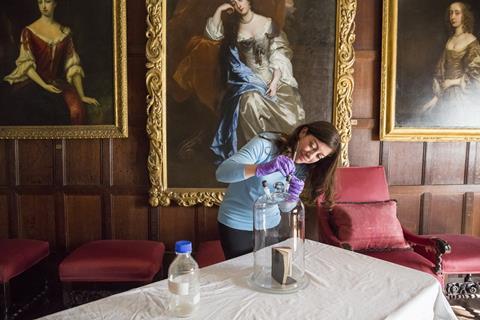
Sometimes scents are diffused ambiently into the room. But more often than not, point-of-scent techniques are used instead. These include containers that can be opened and sniffed, scented cardboard sticks or spray bottles. The latter only spray the scented air from the perfume bottle, rather than the perfume itself. ‘This is called dry diffusion and is considered safe by all the curators and conservators I worked with so far,’ says Verbeek.
In 2020, Verbeck used a combination of tools to add historical scents to a tour of the Rijksmuseum Amsterdam aimed at visitors with low vision. Chemists at the US company International Flavors & Fragrances (IFF) created scents for 20 of the museum’s artworks including paintings, sculptures and artefacts. These scents were placed in headspace containers treaded together into necklaces for the guests to wear and use.
How we perceive and interpret smells is directly related to our cultural background
The scents on this tour were a mixture of artistic recreations and those informed by scientific research. ‘For historical perfumes, I collected bottles from the 1920s, 1930s and 1940s and [the IFF chemists] did headspace gas chromatography so they could find out which ingredients were in there,’ says Verbeek. The chemists also captured and recreated the scent profile of current-day horses to accompany a picture of the Battle of Waterloo, reconstructed Napoleon’s perfume from a recipe, and recreated the smell of moist earth, gunpowder and rain.
There is an added layer of complexity to all historic scent recreations: how to account for how our perceptions of smells have evolved over the decades, centuries and millennia. ‘The way we perceived smells in the past and the way we perceive smells now is different,’ says Bembibre. This is because ‘how we perceive and interpret smells is directly related to our cultural background, the level of smells in the environment, our sensitivity and our expectations’, she adds.
Not knowing how, and by how much, scent perceptions have changed over time, impacts the accuracy of historic scent recreations. Bembibre and Strlič, however, are working to make it easier for chemists in the future to recreate some of the historically significant smells that are still around today. This work includes developing a standardised language to record people’s perceptions of historical smells together with the chemical data.
During the St Paul’s Cathedral Library project, Bembibre and Strlič developed a Historic Book Odour Wheel. The wheel contains words such as woody, smoky, earthy, vanilla, musty, sweet and almond that visitors use as prompts to help them describe the smells they are experiencing. Each of these smell descriptors are linked on the wheel to their relevant VOCs. This wheel has since been used by the Institute of Digital Archaeology during their documentation and recreation of the scents of a number of books stored in the Bodleian Old Library at the University of Oxford. Among the books whose scents were recreated were a 1217 copy of Magna Carta and a 1623 copy of the first folio of William Shakespeare’s plays.
Smell offers an important portal to our past that has so far been underutilised. In addition to increasing public engagement with the past that we already know about, this growing interest in studying and recreating past scents will hopefully let us uncover more secrets of our past that were previously thought lost forever. This won’t be achieved by working in silos. ‘This work is superbly complex,’ says Strlič. ‘What I enjoy is the rich interdisciplinary approach that is required to tackle what might seem like a simple chemical analytical problem.’
Nina Notman is a science writer based in Salisbury, UK
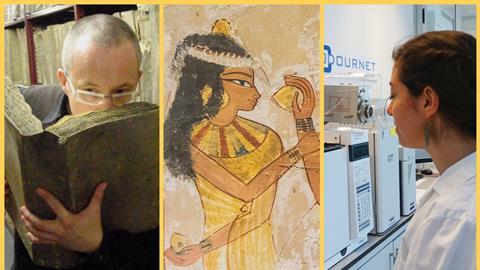
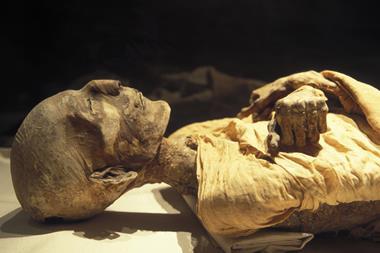
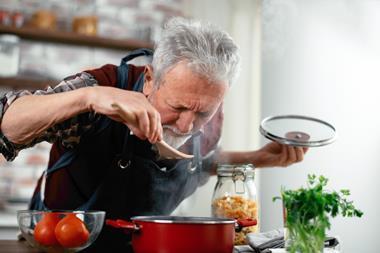
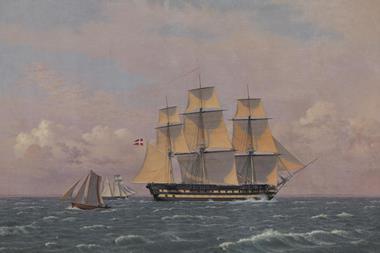
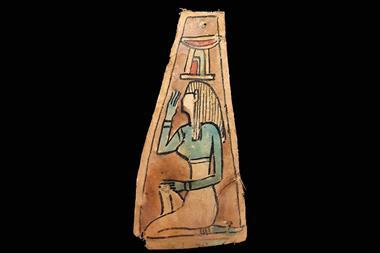
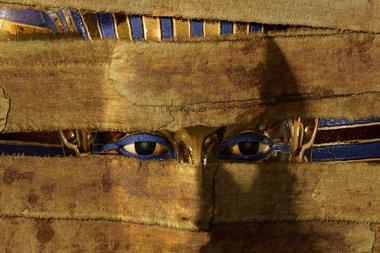
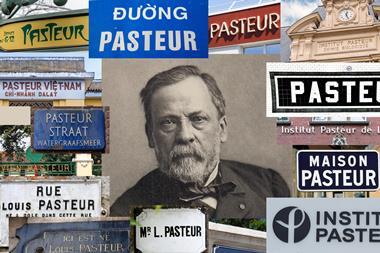






No comments yet